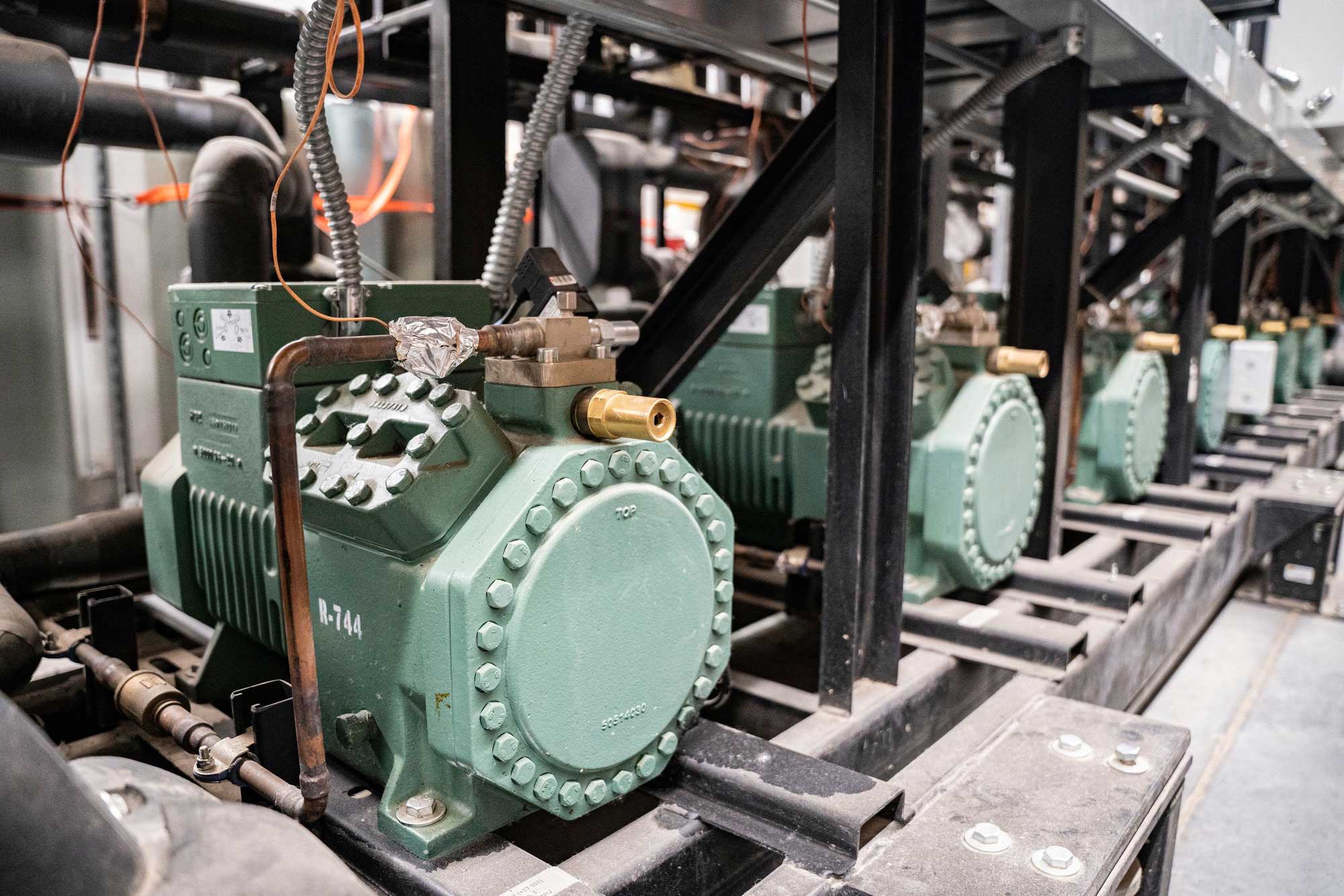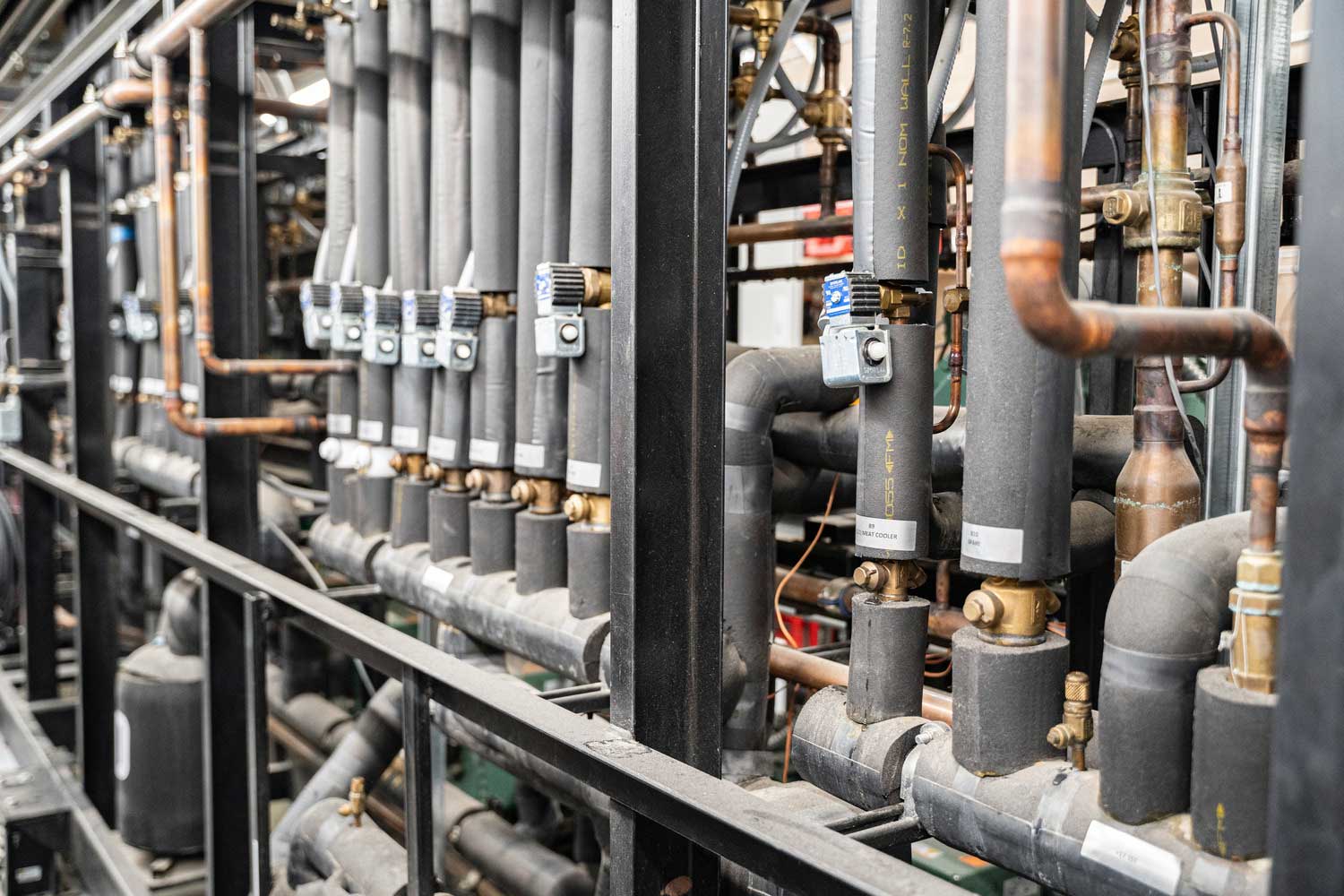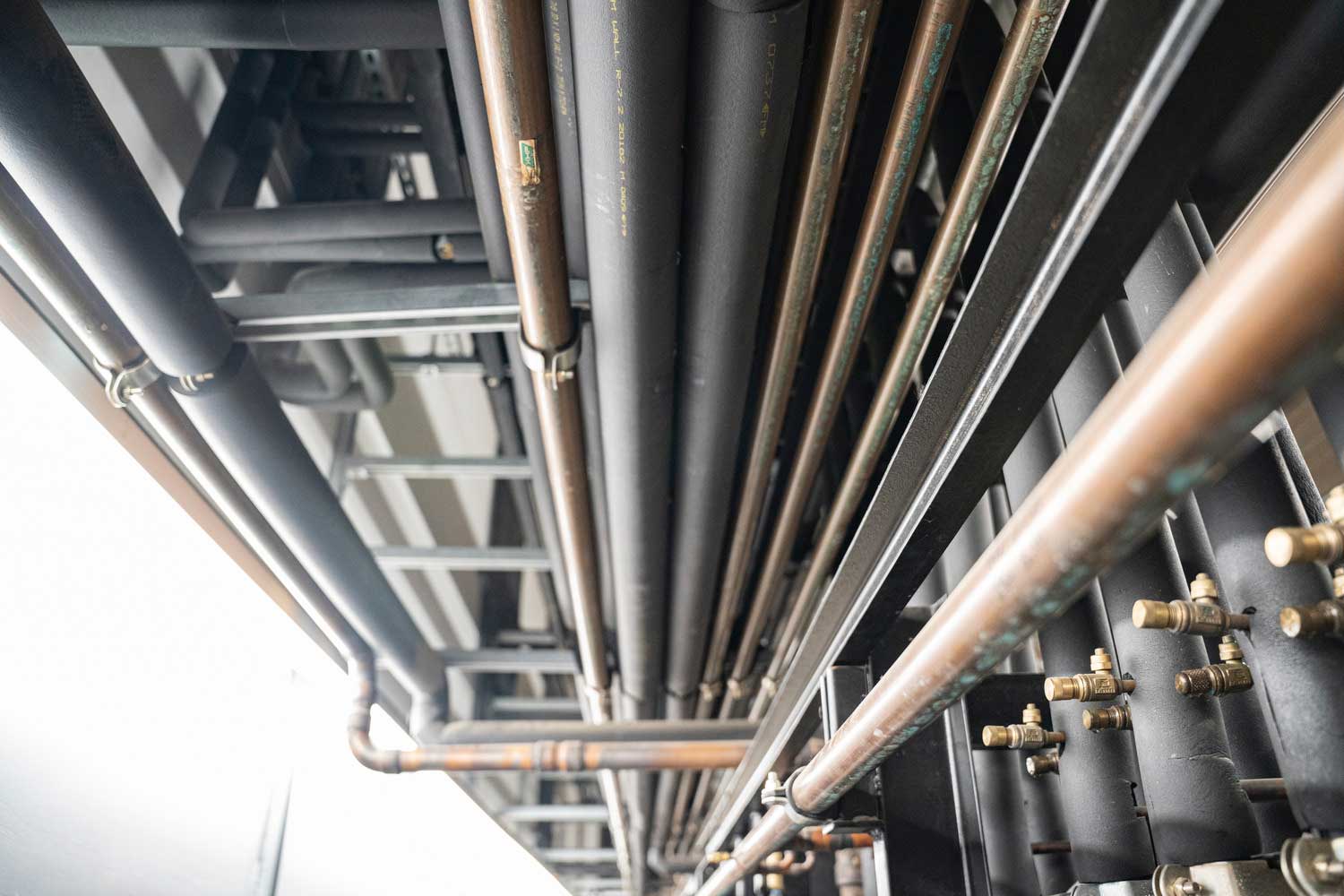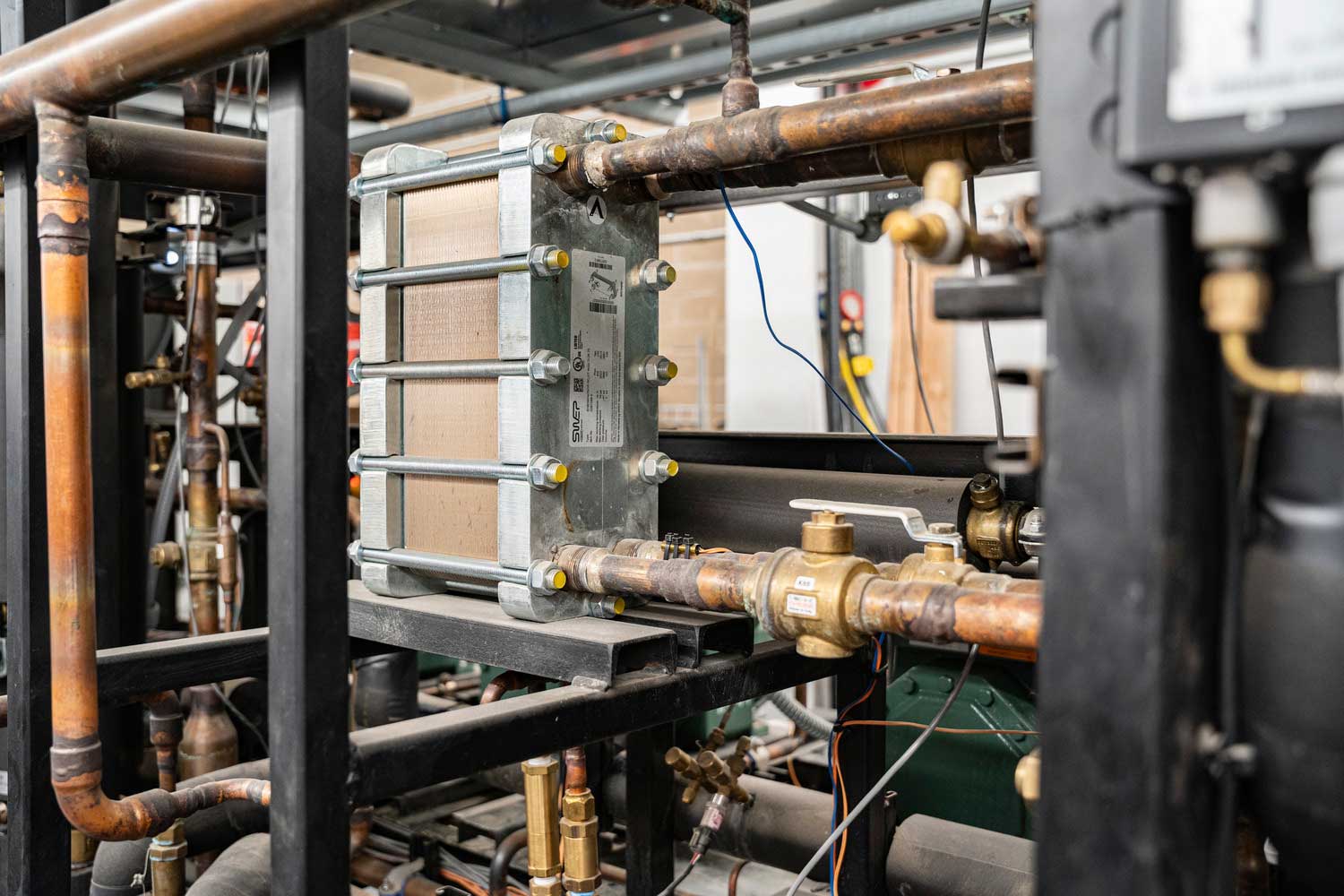CO2 Refrigeration System Considerations: How to Successfully Make the Switch
With California banning the sale of high global warming potential (GWP) hydrofluorocarbon (HFC) refrigerants, low or ultra-low GWP refrigerants, such as carbon dioxide (CO2), are being implemented in grocery store designs across the state. Beyond California, this impactful emissions-reduction tactic for grocery retailers is picking up traction across the country.
HFCs are greenhouse gases with global warming potentials (GWPs) that can be hundreds to thousands of times more potent than carbon dioxide (CO2). (Source: EPA)
One well-known nationwide retailer has taken steps to reevaluate their refrigeration system design, not only to satisfy the California requirements, but also to improve their refrigeration systems and reduce emissions across their locations. As part of this initiative, the retailer tasked Cushing Terrell’s refrigeration engineering team with the creation of an alternate CO2 refrigeration design in addition to their current HFC refrigeration design. Through this work — which includes implementation of new GreenChill-certified CO2 systems in 20-plus stores — we’ve found the following to be the top three things to consider when making the switch.
1) Expert Partnerships
When compared to a traditional HFC refrigeration system, designing a CO2 refrigeration system presents new hurdles when it comes to equipment supply and coordination with the installation contractors. It’s important to work regularly with specific contractors to increase the understanding and knowledge of CO2 refrigeration systems, which are new to the grocery industry in the United States.
CO2 refrigeration systems operate at higher pressures than HFC systems, requiring copper-iron alloy or stainless-steel refrigerant piping as well as copper-iron alloy or stainless-steel tubes for evaporator coils and gas coolers. This means that in a remodel, when a system is changed from an HFC refrigerant to CO2, all components — including refrigerated cases, evaporator coils, piping and condensers — must be replaced. With the different materials required, we work closely with manufacturers to ensure the equipment will be readily available and that we have a contractor on board who is fully versed in the installation process for these systems.
CO2 refrigeration systems operate at higher pressures than HFC systems, requiring copper-iron alloy or stainless-steel refrigerant piping as well as copper-iron alloy or stainless-steel tubes for evaporator coils and gas coolers.
2) Nuances of a CO2 System
With CO2 systems, we include a standby generator and condensing units that provide cooling for the refrigerant in the event of power loss or high pressure in the refrigeration system. Additionally, because CO2 expands and builds pressure quicker than an HFC refrigerant when not operating, we include pressure-relief piping, which will discharge refrigerant in the case of excessive pressure. However, this is a rare occurrence due to the condensing units, powered by the standby generator, which provide cooling to the compressor rack and prevent an increase in pressure and subsequent system maintenance.
Adding equipment such as condensing units and a standby generator to a design can be complicated, but our team loves a challenge. Typically, there are space limitations, and this requires creative thinking and expert space planning to fit all pieces of the system together. Stacking compressor racks and condensing units is one solution we’ve used to help reduce system footprints, as well as rethinking the traditional machine room where the primary system components are housed.
3) Existing Building Layouts
With existing buildings, design and implementation teams typically need to maintain and work within the current building layout. In the case of our retail client, our team created a structural steel design that can be used for both CO2 and HFC systems, maintaining continuity of information found in both drawing sets. And while it can be a challenge to adopt new design standards for complicated systems, it also provides the opportunity to look at those systems in different ways and create something even better.

Stacking compressor racks and condensing units is one solution we use to help reduce system footprints and fit within existing stores.
Future-Focused Knowledge and Implementation
Moving into the future with CO2 refrigeration systems, it’s crucial to continue educating refrigeration service technicians and installers. There are many differences between the system architecture and equipment requirements of CO2 and HFC refrigeration systems, and being able to understand those differences is fundamental for retailers, service technicians, and engineers. Learning is involved for all parties, which means there are plenty of opportunities to improve on current practices.
With one of the largest refrigeration engineering groups in the country, Cushing Terrell’s knowledge and experience run deep. Our portfolio includes more than 4,000 commercial refrigeration projects, and some of our most groundbreaking work has included the design of the first ammonia/CO2 cascade system in a U.S. grocery store. We do more than just stay current with the available technologies, we ensure we have a seat at the table where next-generation ideas are discussed. We actively seek out, research, and employ new technologies that propel our clients into the future of natural and efficient refrigeration design.
Looking to make the switch? Reach out to our refrigeration engineering team to learn more.





